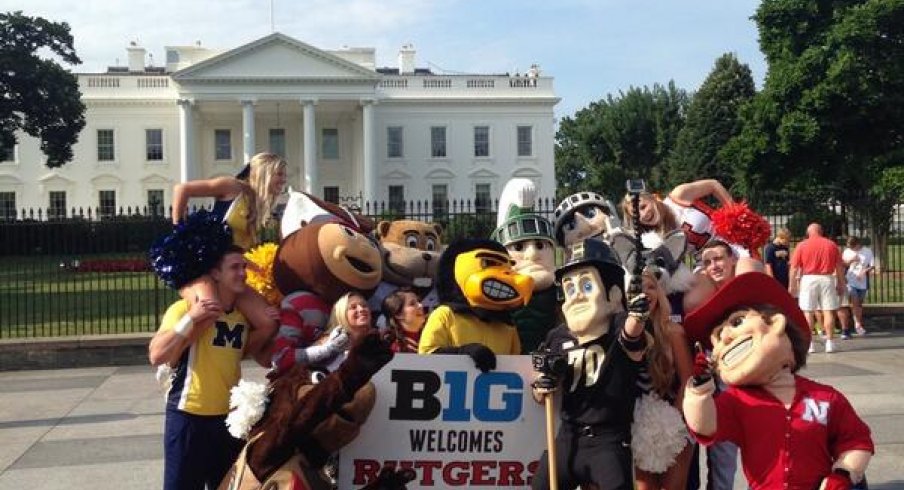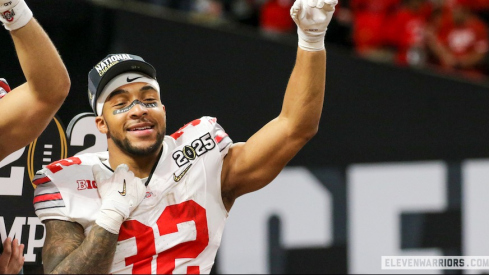The 19th century was filled with expansion in the United States. Manifest Destiny, the belief that the country should spread from sea to shining sea, swept through the nation. Big Ten Commissioner Jim Delany has taken to Horace Greeley famous advice – “Go West, young man” – except he’s heading in the opposite direction.
The day many Big Ten fans dreaded is finally here: Maryland and Rutgers are officially members of the conference. And with that, the Big Ten’s eastward expansion is on. Even in an era of conference realignment, Maryland and Rutgers in the Big Ten was not predictable.
The conference now stretches 1,308 miles, from Lincoln, Nebraska to Piscataway, New Jersey.
From 1953 to 1991, the Big Ten was exactly that – 10 teams. Penn State joined in 1991, providing the conference with its first footprint in the east. But when Nebraska fled the Big 12 in 2011, the Big Ten was still known as a Midwestern league. Geography said so, as did the postseason.
The Big Ten Tournament rotated between Chicago and Indianapolis, the capital of Midwest hoops, and the football championship game was placed in the Colts’ sparkling Lucas Oil Stadium. Delany confesses, however, that observing the expansion-crazed landscape led him to believe the Big Ten needed to act – and new members needed to come from the east, not west.
“There was more risk to not do anything,” he said.
So in the fall of 2012, Maryland and Rutgers hopped aboard. But the push east didn’t stop there. Delany and the Big Ten have been all in. In May, the conference made two significant steps toward spreading its brand to a region the Big Ten hasn’t called home.
The Gavitt Tipoff Games, a non-conference basketball relationship with the Big East, that will feature eight games between the conferences to begin each college basketball season. The Big Ten announced the following day that the 2017 conference tournament will be held in Washington, D.C. at the Verizon Center, just blocks from the White House. The Chicago Tribune reported Delany is determined to have the basketball tournament in Madison Square Garden for at least one season.
“The competition between conferences for eyeballs and attention is all a positive for college sports fans in the corridor,” Delany said.
Appropriately, Maryland and Rutgers’ dominate school color is red – because the carpet has certainly been laid out with a full ticker tape parade.
“We’re a two-region conference,” Delany said. “We’re not going to visit the East. We're going to live in the East.”
The Pinstripe Bowl and Johns Hopkins lacrosse also connected with the Big Ten. More visibility for the conference comes in the form of a Manhattan office on Third Avenue and office space in Washington. Midwest meet the East Coast, East Coast this is the Midwest.
Delany’s shrewd maneuvering put the conference in two geographic regions. He’s been here, there and everywhere in between during the run-up to July 1. New York City, Washington, College Park, Piscataway, Chicago – and dozens more. All those cities have been on a hefty itinerary. He’s arrived at his destinations via planes, trains and automobiles.
During the conference’s New York and Washington announcements, Delany took Amtrak from Penn Station in New York to Union Station in Washington.
Money, of course, is the central player in the expansion equation. Even Delany, athletic directors and head coaches acknowledge that fact, especially university brass at Maryland and Rutgers. Both athletic departments have had deficits running into the tens of millions of dollars per year. Maryland took the drastic step of cutting eight sports in 2011.
But there are other areas – not just dollar signs – in play. Recruiting should spike, new fans will discover the Big Ten and brand-name schools, like Ohio State, will venture into markets it rarely sees.
“This is a chance to expand our base, stay connected with our already existing fans and offer games we think everyone will like,” Delany said. “We have to enhance and increase our presence.”
What set the Big Ten’s eastward expansion in motion was the collapse of the Big East. The region was both valuable and unoccupied. The addition of an ACC lifer and Big East also-ran has been mocked by pundits for almost two years, but both universities profiles fit what the Big Ten is seeking – quality academics, an attractive location and big-time athletics.
“The commonalities between these schools and the others in the Big Ten are numerous,” Delany said. “The academic people at Rutgers and Maryland are thrilled about this. They will fit in well among their Big Ten colleagues.”
The Big Ten’s decline in prominence in football has coincided with massive population shifts inside the United States borders. As people left the Midwest for the Sun Belt, the Big Ten’s football rosters became less impressive, contributing to a non-factor status in the national championship hunt, save for a few good years from Ohio State.
Less than 10 percent of Rivals.com’s top 325 players reside in Big Ten states.
When it comes to television, the Big Ten’s negotiating power just rose considerably. They have a footprint in 14 of the country’s 40 biggest markets – 1. New York, 3. Chicago, 4. Philadelphia, 9. Washington, 11. Detroit, 15. Minneapolis, 17. Cleveland-Akron, 23. Pittsburgh, 25. Indianapolis, 26. Baltimore, 32, Columbus, 34. Cincinnati, 35. Milwaukee, 39. Grand Rapids-Kalamazoo-Battle Creek.
The next contract will be written in 2017, and every school in the Big Ten except Michigan State may as well change their colors to green. In New York, BTN agreed to a deal with Time Warner Cable, Cablevision and Comcast to distribute the channel to the nearly 20 million inhabitants of the metro area.
“It is our number one priority this year to integrate Rutgers and Maryland into the Big Ten Network and make high-quality programming for both schools,” BTN president Mark Silverman told the Star-Ledger.
Reasons can be discussed, but Rutgers’ inclusion into the conference would not have occurred if the university was located in Kentucky, West Virginia or another Big Ten border state. The school’s proximity to New York City – the football stadium is 40.4 miles from the Empire State Building – was akin to a golden ticket, with Jim Delany starring as Willy Wonka.
“I think the one thing you realize right away about Jim Delany is he’s got a plan,” Rutgers head football coach Kyle Flood said. “He’s got a very definitive idea of what he wants the conference to be. There’s a reason why he wanted us in the conference, and we’re excited about it.”
Member schools received $23 million in 2012. Estimates for 2017-18, the first year of the new contract, have topped $40 million.
Delany, a University of North Carolina graduate who grew up in South Orange, New Jersey, has long craved a grip on the New York market. Both Rutgers and Maryland ace the location test. But can they upstage the competition on the field? Signs point to no for several sports.
Rutgers has never appeared in a BCS bowl and hasn’t been to the NCAA Tournament since 1991. Maryland won the college basketball national championship in 2002. The Terrapins last BCS appearance came during the 2001 season. The two schools were a combined 13-13 on the gridiron last season.
You’d never know both schools lacked football tradition – ticket sales are up 25 percent, thanks to loaded home schedules and the allure of the Big Ten.
“We are eager to celebrate this big moment in our history,” University of Maryland President Wallace D. Loh said. “We have chosen our future, spent a year of intense preparation, and have been welcomed by the Big Ten with exceptional camaraderie.”


